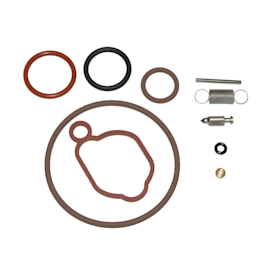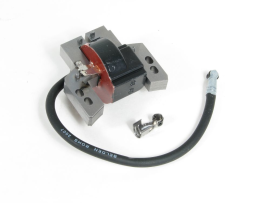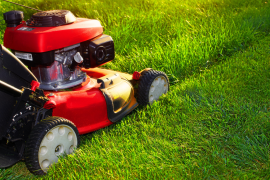6 sure ways to destroy a lawn mower


If you dread the drudgery of mowing your lawn all summer, here are six sure ways to destroy your lawn mower, which frees up your time for naps in the hammock and trips to the beach.
You can also advance your cause by completely ignoring our articles and videos about caring for your lawn mower and our DIY guides for lawn mower repairs.
1. Neglect the air filter
The mower's air filter catches dirt that otherwise would find its way into the mower engine through the carburetor. That dirt accumulates in the air filter, keeping oxygen from reaching the engine. Without adequate oxygen for internal combustion, the engine sputters and coughs.
You can speed up your mower's demise by ignoring the manufacturer's recommendation that you replace or clean your air filter—whether you clean or replace depends on your mower model—once a year or after every 100 hours of operation, whichever comes first. Also turn your nose up at the suggestion that you service the mower filter more often if you mow in dusty conditions—like using your mower to mulch dry leaves in autumn.
2. Skip the oil change
The grit in dirty engine oil grinds on moving parts in the engine, shortening the engine's life. Being low on engine oil can burn out the engine completely. But skipping the oil changes that's recommended every 3 months or after 25 hours of mower use (whichever comes first), you can wear down the engine in a jiffy.
3. Ignore the spark plug
An old or improperly gapped spark plug makes the engine run rough. A wet or corroded plug won't start the engine at all. So don't replace the spark plug yearly.
4. Let grass clippings accumulate
Clippings and dirt that collect on the mower can block cooling fins and the air intake screen, making the engine overheat. Moist debris—and even dry grass clippings which are moist—can trigger corrosion and rust. After mowing, don't bother removing the clippings, and your mower deck will eventually look like Swiss cheese.
5. Use old fuel
Gasoline that sits in the mower over the winter collects moisture, unless it's been treated with a fuel stabilizer. So does gasoline that sits in a gas can for months, especially if that gasoline contains ethanol. Water prevents the engine from starting—your mower's engine can't burn water.
6. Disregard vibrations
An imbalanced blade—one that was sharpened unevenly—makes a mower shake. So does a bent blade. So does a loose blade (a loose blade also could fly completely off the mower and get lost forever in tall grass—assuming it doesn't hit something first).
By overlooking the vibrations that signal that the blade is bad, you pretty much guarantee a lousy cut. Even better, the shaking could eventually damage the lawn mower crankshaft.
Symptoms for gas walk-behind mowers
Choose a symptom to see related walk-behind mower repairs.
Main causes: dirty carburetor, bad spark plug, clogged air filter, engine choke problems, clogged gas cap vent…
Main causes: drive control cable failure, worn or broken drive belt, bad transmission, broken drive wheel…
Main causes: stale gas, engine needs tune up, bad spark plug, dead battery, bad recoil starter, faulty safety switch, ba…
Main causes: engine needs tune up, dirty or clogged carburetor, damaged flywheel key…
Main causes: uneven wheel height settings, damaged wheel, dull or damaged cutting blade…
Main causes: damaged cutting blade, loose cutting blade, damaged flywheel key, engine needs tune up…
Repair guides for gas walk-behind mowers
These step-by-step repair guides will help you safely fix what’s broken on your walk-behind lawn mower.

How to replace a lawn mower transmission
Learn how to replace the transmission on your lawn mower if it's locked up or won't drive the wheels.…

How to rebuild a lawn mower carburetor
The carburetor mixes air with fuel to drive the piston. Rebuild the carburetor if it's clogged or leaks.…

How to replace a lawn mower ignition coil on a flathead engine
If the spark plug doesn't fire when you try to start the mower, you could have a defective ignition coil. Follow these s…
Articles and videos for gas walk-behind mowers
Use the advice and tips in these articles and videos to get the most out of your walk-behind lawn mower.

Learn about a new feature added to the Search Bar on Sears PartsDirect…

Learn how a blade removal tool makes replacing the blade easier and safer…

Find out how to test and fix problems with the spark plug, stop wire, ignition coil and flywheel.…